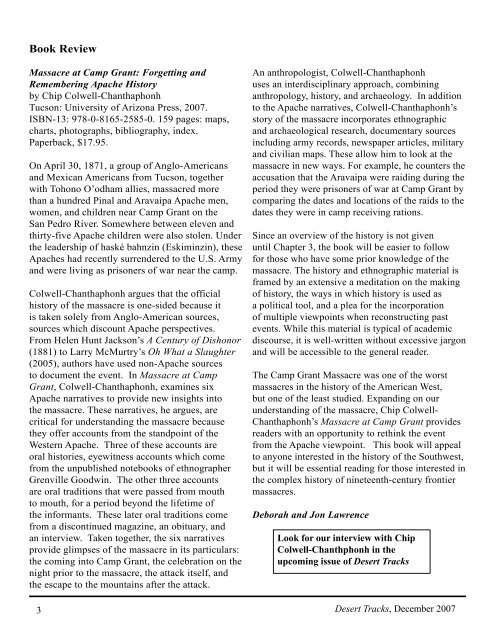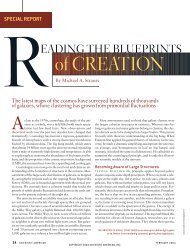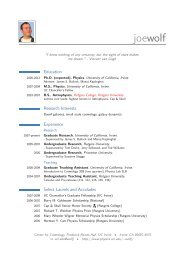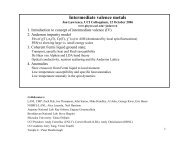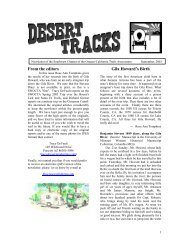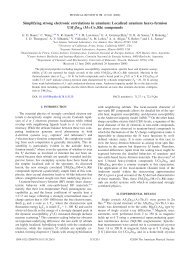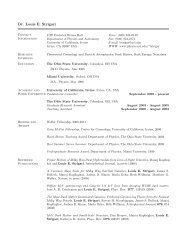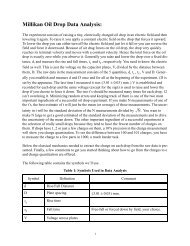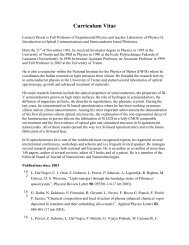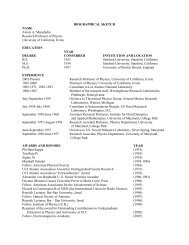Work on the Apache Pass Trail - Southern Trails Chapter
Work on the Apache Pass Trail - Southern Trails Chapter
Work on the Apache Pass Trail - Southern Trails Chapter
You also want an ePaper? Increase the reach of your titles
YUMPU automatically turns print PDFs into web optimized ePapers that Google loves.
Book Review<br />
Massacre at Camp Grant: Forgetting and<br />
Remembering <strong>Apache</strong> History<br />
by Chip Colwell-Chanthaph<strong>on</strong>h<br />
Tucs<strong>on</strong>: University of Ariz<strong>on</strong>a Press, 2007.<br />
ISBN-13: 978-0-8165-2585-0. 159 pages: maps,<br />
charts, photographs, bibliography, index.<br />
Paperback, $17.95.<br />
On April 30, 1871, a group of Anglo-Americans<br />
and Mexican Americans from Tucs<strong>on</strong>, toge<strong>the</strong>r<br />
with Toh<strong>on</strong>o O’odham allies, massacred more<br />
than a hundred Pinal and Aravaipa <strong>Apache</strong> men,<br />
women, and children near Camp Grant <strong>on</strong> <strong>the</strong><br />
San Pedro River. Somewhere between eleven and<br />
thirty-five <strong>Apache</strong> children were also stolen. Under<br />
<strong>the</strong> leadership of haské bahnzin (Eskiminzin), <strong>the</strong>se<br />
<strong>Apache</strong>s had recently surrendered to <strong>the</strong> U.S. Army<br />
and were living as pris<strong>on</strong>ers of war near <strong>the</strong> camp.<br />
Colwell-Chanthaph<strong>on</strong>h argues that <strong>the</strong> official<br />
history of <strong>the</strong> massacre is <strong>on</strong>e-sided because it<br />
is taken solely from Anglo-American sources,<br />
sources which discount <strong>Apache</strong> perspectives.<br />
From Helen Hunt Jacks<strong>on</strong>’s A Century of Dish<strong>on</strong>or<br />
(1881) to Larry McMurtry’s Oh What a Slaughter<br />
(2005), authors have used n<strong>on</strong>-<strong>Apache</strong> sources<br />
to document <strong>the</strong> event. In Massacre at Camp<br />
Grant, Colwell-Chanthaph<strong>on</strong>h, examines six<br />
<strong>Apache</strong> narratives to provide new insights into<br />
<strong>the</strong> massacre. These narratives, he argues, are<br />
critical for understanding <strong>the</strong> massacre because<br />
<strong>the</strong>y offer accounts from <strong>the</strong> standpoint of <strong>the</strong><br />
Western <strong>Apache</strong>. Three of <strong>the</strong>se accounts are<br />
oral histories, eyewitness accounts which come<br />
from <strong>the</strong> unpublished notebooks of ethnographer<br />
Grenville Goodwin. The o<strong>the</strong>r three accounts<br />
are oral traditi<strong>on</strong>s that were passed from mouth<br />
to mouth, for a period bey<strong>on</strong>d <strong>the</strong> lifetime of<br />
<strong>the</strong> informants. These later oral traditi<strong>on</strong>s come<br />
from a disc<strong>on</strong>tinued magazine, an obituary, and<br />
an interview. Taken toge<strong>the</strong>r, <strong>the</strong> six narratives<br />
provide glimpses of <strong>the</strong> massacre in its particulars:<br />
<strong>the</strong> coming into Camp Grant, <strong>the</strong> celebrati<strong>on</strong> <strong>on</strong> <strong>the</strong><br />
night prior to <strong>the</strong> massacre, <strong>the</strong> attack itself, and<br />
<strong>the</strong> escape to <strong>the</strong> mountains after <strong>the</strong> attack.<br />
3<br />
An anthropologist, Colwell-Chanthaph<strong>on</strong>h<br />
uses an interdisciplinary approach, combining<br />
anthropology, history, and archaeology. In additi<strong>on</strong><br />
to <strong>the</strong> <strong>Apache</strong> narratives, Colwell-Chanthaph<strong>on</strong>h’s<br />
story of <strong>the</strong> massacre incorporates ethnographic<br />
and archaeological research, documentary sources<br />
including army records, newspaper articles, military<br />
and civilian maps. These allow him to look at <strong>the</strong><br />
massacre in new ways. For example, he counters <strong>the</strong><br />
accusati<strong>on</strong> that <strong>the</strong> Aravaipa were raiding during <strong>the</strong><br />
period <strong>the</strong>y were pris<strong>on</strong>ers of war at Camp Grant by<br />
comparing <strong>the</strong> dates and locati<strong>on</strong>s of <strong>the</strong> raids to <strong>the</strong><br />
dates <strong>the</strong>y were in camp receiving rati<strong>on</strong>s.<br />
Since an overview of <strong>the</strong> history is not given<br />
until <strong>Chapter</strong> 3, <strong>the</strong> book will be easier to follow<br />
for those who have some prior knowledge of <strong>the</strong><br />
massacre. The history and ethnographic material is<br />
framed by an extensive a meditati<strong>on</strong> <strong>on</strong> <strong>the</strong> making<br />
of history, <strong>the</strong> ways in which history is used as<br />
a political tool, and a plea for <strong>the</strong> incorporati<strong>on</strong><br />
of multiple viewpoints when rec<strong>on</strong>structing past<br />
events. While this material is typical of academic<br />
discourse, it is well-written without excessive jarg<strong>on</strong><br />
and will be accessible to <strong>the</strong> general reader.<br />
The Camp Grant Massacre was <strong>on</strong>e of <strong>the</strong> worst<br />
massacres in <strong>the</strong> history of <strong>the</strong> American West,<br />
but <strong>on</strong>e of <strong>the</strong> least studied. Expanding <strong>on</strong> our<br />
understanding of <strong>the</strong> massacre, Chip Colwell-<br />
Chanthaph<strong>on</strong>h’s Massacre at Camp Grant provides<br />
readers with an opportunity to rethink <strong>the</strong> event<br />
from <strong>the</strong> <strong>Apache</strong> viewpoint. This book will appeal<br />
to any<strong>on</strong>e interested in <strong>the</strong> history of <strong>the</strong> Southwest,<br />
but it will be essential reading for those interested in<br />
<strong>the</strong> complex history of nineteenth-century fr<strong>on</strong>tier<br />
massacres.<br />
Deborah and J<strong>on</strong> Lawrence<br />
Look for our interview with Chip<br />
Colwell-Chanthph<strong>on</strong>h in <strong>the</strong><br />
upcoming issue of Desert Tracks<br />
Desert Tracks, December 2007


